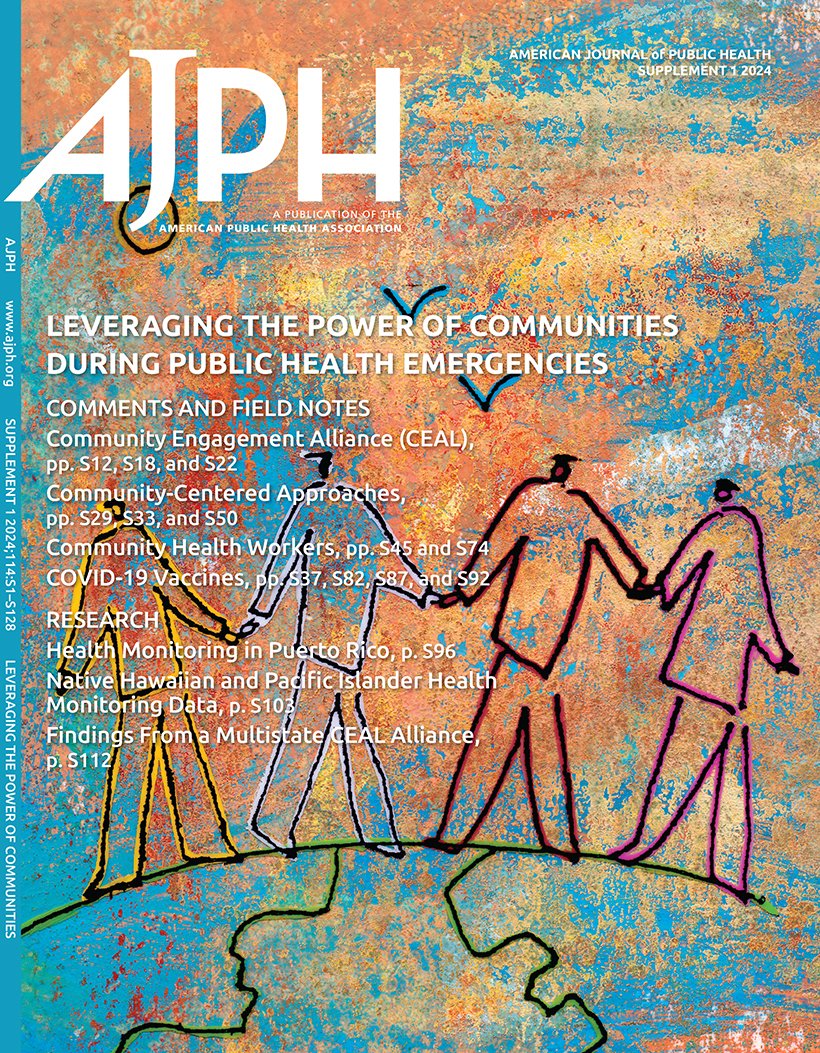Self-Reported Versus County-Based Rurality of People Who Gave Birth in 6 US States, 2020.
IF 9.6
1区 医学
Q1 PUBLIC, ENVIRONMENTAL & OCCUPATIONAL HEALTH
引用次数: 0
Abstract
Objectives. To measure concordance between postpartum people's self-reported residence in rural, urban, or suburban areas and county-based measurement of rurality. Methods. We used survey data (collected January 2021-March 2022) from a representative sample of postpartum people with a live birth in 2020 in 6 US states (n = 3225), comparing respondents' self-report to county designations based on Rural‒Urban Continuum Codes (RUCCs). Results. Nearly 80% of postpartum people had concordant self-reported and RUCC-based residency. That is, 70% lived in counties that matched their self-report as urban (19%) or suburban (51%), and 9% lived in counties that matched their self-report as rural. However, almost 20% were rural discordant (lived in urban RUCC counties and self-reported as rural); these residents were more likely to lack a high-school degree and to have Medicaid-paid births compared with concordant respondents living in the same RUCC counties. Conclusions. County-based measures of rurality may incorrectly categorize substantial portions of rural residents, and those potentially misclassified are of lower socioeconomic status. Public Health Implications. Maternal health programs and policies using county-based definitions of rurality should account for rural residents living in areas designated as urban. (Am J Public Health. Published online ahead of print April 24, 2025:e1-e11. https://doi.org/10.2105/AJPH.2025.308058).2020年美国6个州分娩人口的自我报告与基于县的农村状况。
目标。衡量产后妇女自述农村、城市或郊区居住情况与以县为基础的乡村性测量的一致性。方法。我们使用的调查数据(收集于2021年1月至2022年3月)来自美国6个州(n = 3225)的2020年活产产后妇女的代表性样本(n = 3225),将受访者的自我报告与基于城乡连续代码(RUCCs)的县名称进行比较。结果。近80%的产后患者有一致的自我报告和基于rucc的住院。也就是说,70%的人生活在与他们自我报告相匹配的县(19%)或郊区(51%),9%的人生活在与他们自我报告相匹配的县(农村)。然而,近20%是农村不和谐者(居住在城市ucc县,自我报告为农村);与生活在同一ucc县的和谐受访者相比,这些居民更有可能缺乏高中学历,也更有可能没有医疗补助。结论。以县为基础的农村性测量可能会错误地对相当一部分农村居民进行分类,而那些可能被错误分类的人的社会经济地位较低。公共卫生影响。采用以县为基础的农村定义的孕产妇保健规划和政策应考虑到生活在城市指定地区的农村居民。公共卫生。2025年4月24日提前在线出版:e1-e11。https://doi.org/10.2105/AJPH.2025.308058)。
本文章由计算机程序翻译,如有差异,请以英文原文为准。
求助全文
约1分钟内获得全文
求助全文
来源期刊

American journal of public health
医学-公共卫生、环境卫生与职业卫生
CiteScore
9.50
自引率
3.90%
发文量
1109
审稿时长
2-4 weeks
期刊介绍:
The American Journal of Public Health (AJPH) is dedicated to publishing original work in research, research methods, and program evaluation within the field of public health. The journal's mission is to advance public health research, policy, practice, and education.
 求助内容:
求助内容: 应助结果提醒方式:
应助结果提醒方式:


